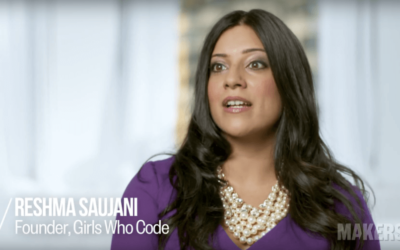Facebook employees protest travel ban by boycotting flying
Facebook employees protest travel ban by boycotting flying.
While some of Facebook’s top executives have already spoken out against President Trump’s immigration moratorium, other company employees are protesting the ban by boycotting flying.
A handful of Facebook employees have committed to either fly less or completely boycott flying for the next 90 days in protest of Trump’s order, which bars people from seven predominantly Muslim countries from entering the US for 90 days and bars the admission of all refugees for 120 days.
The protest was organized by Facebook vice president of engineering Regina Dugan, according to a post on her Facebook page Friday.
Dugan was poached by Facebook CEO Mark Zuckerberg from Google in early 2016 to lead the social giant’s mysterious Building 8 hardware division.
“And I decided that I had to do something.
Before I knew it, a small rag tag team of citizen coders had formed.
A designer made a logo.
“If one out of every ten of those people boycott air travel for 90 days, it will make a $5B statement.
“Now it is our turn.” Some Facebook employees, including several who work within Dugan’s Building 8 division, have shared the website with the hashtag “#nofly90.” Employees from Google and other tech companies have also shared the hashtag.
5 predictions about Alexa, Cortana, and other AI assistants
5 predictions about Alexa, Cortana, and other AI assistants.
The 2017 Voice Report is a look ahead at what to expect in the coming chat wars between companies like Microsoft, Samsung, Google, and Amazon.
Combined, VoiceLabs customers serve more than a million people using devices like Amazon Echo and Google Home, Marchick told VentureBeat in a phone interview.
In its December 2016 survey of Amazon Echo and Google Home devices, VoiceLabs found that only 11 percent would be willing to buy a Google Home after buying an Amazon Echo and vice versa.
Push notifications and social connection will be the Pokémon Go of intelligent assistants There are no breakout hits at the moment among the more than 8,000 Alexa skills and approximately 75 Google Assistant conversation actions, no killer app to be found. ‘” Marchick said.
Unfortunately, Marchick expects push notifications for voice-enabled devices to be a lot like those on mobile devices, at least at first.
This will bring overall sales to 33 million since 2014.
VoiceLabs believes that by the end of 2017, two new popular devices with intelligent assistants inside will emerge to compete with the Echo and Home, likely from Samsung, Apple, or Microsoft.
Cortana, Google Assistant, and Alexa are making their way into more cars and appliances, so even if there is no epic battle between four smart speakers with an intelligent assistant inside, you can absolutely expect to find them in many devices other than smart speakers.
Why public VR experiences could beat at-home headsets
Why public VR experiences could beat at-home headsets.
The figures are in, and consumer spending on virtual reality hardware was surprisingly low in 2016.
Oculus Rift, HTC Vive, and Sony’s Playstation VR all underperformed against the market’s expectations, leaving some to wonder about the industry’s prospects in 2017.
While mobile VR platforms like Google’s Daydream could deliver on the promise of widespread use of VR at home, there’s a real possibility that a more promising launch point will be the kinds of VR experiences that require us to get out of the house.
2017 could be a year that out-of-home virtual reality becomes more common with things like micro amusement parks, VR arcades, and even fitness gamer gyms.
The design of physical space is a critical element of good VR, and one benefit of these setups is that the physical layout can be tailor-made for VR.
I recently had a chance to try out one high-end out-of-home installation at the headquarters of The Void, in Lindon, Utah — a sort of building scale experience with a full stage setup and interactive effects (think big fans blowing wind in your face).
The experience I tried, a Ghostbusters themed game, was not unlike going to laser-tag — except you’re moving around inside a video game world.
This blending of the physical and virtual worlds created one of the most impressive experiences I’ve had in VR yet.
Two Bit Circus, an ambitious project that just raised a $15 million Series B, is funding the creation of 30,000 square foot micro-amusement parks equipped with multi-person virtual reality, social games, and other mixed reality attractions.
Girls Who Code CEO: ‘Stand up and fight’ against Trump’s immigration ban
Girls Who Code CEO: ‘Stand up and fight’ against Trump’s immigration ban.
For several years, Reshma Saujani, founder and CEO of Girls who Code—a non-profit that has trained 40,000 girls to do just that—has been perhaps the nation’s fiercest advocate for STEM education and closing the tech sector’s gender gap.
Her mission to build “the largest pipeline of future female engineers in the United States” has yielded results (a crop of computer science majors, corporate partnerships) and accolades (a Shorty Award honor, a place on Fortune’s World’s Greatest Leaders list in 2016).
In an op-ed published Friday on CNBC, Saujani called on fellow citizens to “stand up and fight for an America that welcomes young doers and dreamers”—and against the executive orders Trump issued last Friday evening, effectively banning refugees and citizens of seven “terror-prone” nations for at least 90 days.
Saujani’s parents were refugees.
The mass expulsion, ordered by a newly empowered Ugandan dictator Idi Amin, was done in the name of his “Uganda First” policies.
Saujani sees parallels between that ugly moment in Uganda, 40 years ago, and America today.
While she notes Trump’s vision offers a “seductive simplicity,” particularly at a time when the world seems to be changing faster than ever before, she holds herself up as evidence that accepting refugees and immigrants is in America’s best interest.
“My pursuit of public service only exists because this nation gave my parents political asylum and a shot at a new life,” she says.
Copyright 2017
How AI will transform education in 2017
Education has mostly followed the same structure for centuries — e.g., the “sage on a stage” and “assembly line” models.
Given that education is the foundation that prepares people to pursue advancements in all the other fields, it has the potential to be the most impactful application of AI.
Key trends The three segments of the education market — K-12, higher education, and corporate training — are going through transitions.
In the K-12 market, we are seeing the effect of the newer, more rigorous academic standards (Common Core, Next Generation Science Standards) shifting the focus toward measuring students’ critical thinking and problem-solving skills and preparing them for college and career success in the 21st century.
The education industry has primarily three types of players — content, platform, and assessment providers — and each is going through a transition.
And assessment will continue to play a pivotal role in transforming the education industry as it transitions from multiple-choice tests toward more innovative question types.
The dynamics generated by the key trends and players suggest a need for a disruptive innovation in education.
We will see several applications of AI in education in 2017, such as: AI for grading students’ written answers Bots that answer students’ questions Virtual personal assistants that tutor students Virtual reality and computer vision for immersive, hands-on learning Simulations and gamification with rich learning analytics Take, for example, the grading (assessment) problem, which is at the core of education.
Bots for education will also play an important role in scaling online learning, as when Georgia Tech professor Ashok Goel used AI as a teacher’s assistant that answered students’ questions successfully.
Students would be able to learn better with instant feedback and guidance, teachers would get rich learning analytics and insights to personalize instruction, parents would see improved career prospects for their children at a reduced cost, schools would be able to scale high-quality education, and governments would be able to provide affordable education to all.
Will the Patriots’ VR training help them win the Super Bowl?
But even more intriguing is what’s happening behind the scenes—more and more teams, including Super Bowl contenders the New England Patriots, are convinced that virtual reality will change the way players prepare for the big game.
Others include the Dallas Cowboys, Minnesota Vikings, and Arizona Cardinals.
No word on whether Patriots QB Tom Brady has trained using the tech—though he is featured in a Super Bowl ad for the Intel 360 video system.
But another legendary quarterback has cosigned the idea in a big way.
At the Consumer Electronics Showcase in January, hall of famer Joe Montana said he wished he’d had VR in his heyday, emphasizing that mental preparation is the largest part of quarterbacking.
That’s one big reason the StriVR system uses 360-degree video of plays, often shot during team practices, instead of 3D graphics.
And because football is based on coordinated plays with fixed timing (at least in theory), rote repetition helps program players’ muscle memory.
If teams could get access to the full feed of game cameras, they could give QBs virtual run-throughs of past real games, even if there was nobody on the field wearing a 360 camera.
Be the #LAKings goalie with our VR Experience at tonight’s game outside of Section 105!
If quarterbacks are training in VR, and fans are watching the game in immersive 360 video, does the actual action on the field get lost in the virtual shuffle?
How Reviews Influence Women’s Shopping Decisions (Infographic)
How Reviews Influence Women’s Shopping Decisions (Infographic).
Product reviews and testimonials are so important today that companies pay people to review their products or service.
It’s a good idea too, as it turns out 68 percent of women say they rely on reviews when making purchasing decisions.
In a recent study, product reviews company Influenster surveyed 11,255 women of all ages to uncover what influences their shopping decisions, and reviews topped the list.
Companies should make sure their online reputations are spick-and-span, as 44 percent of women admit to spending at least 20 minutes researching something online before buying it.
The industry your business is in will also determine whether a woman is likely to dive deep into reading reviews.
Eighty-five percent of women read reviews for beauty and wellness products, and a little over half do for electronics and clothes and shoes.
It’s no surprise that groceries, books and homecare and cleaning products are not so highly researched.
From where women go to seek out reviews to what device they are reading them on — check out the infographic below to learn more.
Alabbar’s message to GCC business patriarchs: Participating in the digital revolution is our obligation
Why does a real estate company need a digital officer?
Noon, funded by Saudi Arabia’s Public Investment Fund (PIF) and a group of investors led by Alabbar, each of the partners contributing US$500mn, should launch this month.
You have good years, you have slow years, but in general this market is okay.
“So, I think this might actually trigger more investors to come into the market, whether they will be the right angel investors or not still has to be seen.
“The next wave of local tech start-ups will gradually attract family offices who will diversify their investment portfolio based on the changing regional landscape.
Most of the surveyed families have progressed from focusing solely on local business ventures and real estate, and have started allowing access to capital for start-ups and/or direct investing opportunities to their younger generations.
“I got nothing but support from my family from the get-go.
What came along with that was a dismissal of the seriousness of my endeavour and of my capabilities, as well as the potenital of investing in technology and high impact businesses.” Teaming up with Chantalle Dumonceaux, whom she met while studying at the American University of Paris, Freiha launched Womena, the country’s only fully manager-led women’s angel investor group, with two goals in mind – to provide a platform for HNWI women to make educated and informed investment decisions and to secure funding for the region’s promising early stage technology businesses.
Starting with a small group of 10 investors in 2015, Womena has grown to 42 members, who are expected to make at least one investment a year.
“It is going to attract more entrepreneurs to Dubai to raise funding and also an increasing interest in technology, but we have to make sure that our entrepreneurs can prove themselves and their business models time and time again.
Intuit signs deal with Wells Fargo to share customer data
Intuit signs deal with Wells Fargo to share customer data.
(Reuters) — Wells Fargo & Co reached an agreement with Intuit Inc to allow the bank’s customers who use financial management applications such as Mint, TurboTax and QuickBooks to choose the information they share while importing bank account details.
Intuit’s Mint, TurboTax and QuickBooks are personal finance tools which allow individuals to calculate taxes and pay bills using their smartphones.
An application programming interface (API), built by Wells Fargo, will be used for importing bank account information between the two companies’ servers, lowering cyber security risks.
API is a programming code that specifies how software components should interact.
The arrangement is a step toward allowing individuals to use their mobile phones to track their day-to-day financial activities, which experts believe could help individuals save more money.
Wells Fargo is one of the biggest U.S. banks and Intuit offers some of the most widely used personal finance tools.
The move follows a similar data-sharing agreement between Intuit and J.P. Morgan Chase & Co last week.
(Reporting by Nikhil Subba in Bengaluru; Editing by Shounak Dasgupta)
How AI is changing the way we assess vehicle repair
For insurance customers, that problem might center around a fender bender, or roof damage from a hail storm.
For example, the customer could snap pictures of all sides of the car with their smartphone and upload the pictures into a new experimental app we’re creating that detects auto damage.
Not only does this save time for customers, particularly in the case of a minor accident, but it also reduces uncertainty and worry during a stressful time.
After a machine vision algorithm assesses the auto damage, the customer can decide whether to get a repair done immediately or wait.
Down the road, with the help of another machine learning algorithm, the driver could potentially receive a list of nearby repair shops that may be particularly experienced, for example, in servicing a specific type of vehicle and that have positive online reviews.
Having AI capabilities to triage after an accident is one useful application, but insurance companies can also implement AI to help prevent accidents altogether.
For a suburban-dwelling family, this technology may be what enables a family road trip with less worry, as we’ve found that driving in the city is perceived as stressful and is a deterrent for many.
AI is reaching maturity in some areas, like recognizing objects in images, but work still needs to be done for other tasks.
For example, more work needs to be done when it comes to skills like natural language understanding (NLU).
The more natural and seamless the customer’s interaction with the technology (think of interacting with a virtual assistant), the less effort it takes them to accomplish a task, and the more likely they are to accomplish that task.
Elon Musk explains what the Tesla logo means
Image Credit: Shutterstock / betto rodrigues An automaker’s logo can and perhaps should be as recognizable as its cars, if not more.
Tesla’s logo is certainly not anonymous, but it turns out there’s more to it than may be immediately apparent.
What looks like simply a stylized “T” is actually a reference to the company’s products, Tesla CEO Elon Musk said in a recent tweet (via Motor1).
The Tesla logo is intended to represent the cross-section of an electric motor, Musk explained to a querying Twitter follower.
The stylized “X” in the SpaceX logo is meant to represent a rocket trajectory, Musk said in his tweets.
Both logos were designed by RO-Studio, a design firm based in New Jersey.
SolarCity’s logo includes a sun graphic, representing the power source for the company’s solar panels.
SolarCity was previously controlled by Musk and members of his family, but had been a separate corporate entity from Tesla.
The SolarCity acquisition is the latest indication that Musk views Tesla as more than just an automaker.
Recently, the company officially re-branded itself as simply “Tesla Inc.,” rather than the previous “Tesla Motors.” Last year, it acquired the rights to the domain name “Tesla.com” after roughly 10 years of trying, and has since adopted it as the domain for its website.
U.S. judge rules Google must turn over foreign emails
U.S. judge rules Google must turn over foreign emails.
(Reuters) – A U.S. judge has ordered Google to comply with search warrants seeking customer emails stored outside the United States, diverging from a federal appeals court that reached the opposite conclusion in a similar case involving Microsoft.
Circuit Court of Appeals in New York said Microsoft could not be forced to turn over emails stored on a server in Dublin, Ireland that U.S. investigators sought in a narcotics case.
On Jan. 24, the same appeals court voted not to revisit the decision.
The four dissenting judges called on the U.S. Supreme Court or Congress to reverse it, saying the decision hurt law enforcement and raised national security concerns.
Both cases involved warrants issued under the Stored Communications Act, a 1986 federal law that many technology companies and privacy advocates consider outdated.
Relying on the Microsoft decision, Google said it believed it had complied with the warrants it received, by turning over data it knew were stored in the United States.
Google receives more than 25,000 requests annually from U.S. authorities for disclosures of user data in criminal matters, according to Rueter’s ruling.
16-1061-M to Google, U.S. District Court, Eastern District of Pennsylvania, Nos.
(Reporting by Jonathan Stempel in New York; Editing by Chizu Nomiyama)
5 Steps to Finding Your Next Job
5 Steps to Finding Your Next Job.
Start with 5 to 10 target companies.
Use your LinkedIn connections who are employed at your target companies.
While there, check out the types of positions the company has posted, but at this time, do not rush to apply.
Before asking for referrals, make sure you’ve established a relationship first.
Attempt to convince the employee to be willing to meet with you in person.
Ask about company culture, employment practices, whether it’s a fast-paced company and how employees are treated.
Virtual networking via social media is very important, but typically produces only shallow relationships.
That’s why it’s vital to make yourself visible to those seeking people with your talents and experience.
You must differentiate yourself from others seeking the same job as you are.
AcquiHiring: The new startup buzzword to gain technology and talent
In May 2016, two young entrepreneurs, Deepak Modak and Abhishek Periwal, cofounders of online lending marketplace KountMoney, arrived at the offices of their larger rival Lendingkart in Bengaluru.
By his own estimate, there are about 25 former CEOs working in Voonik, and acquihiring has been a successful way to hire the best talent and get access to technology and domain expertise.
For example, Paytm acquihired online education marketplace Edu-Kart, but its founders left within months.
Also read : Funding taps run dry; startups look at Nasdaq for listing Surviving the startup winter In the past year or so, startups of all sizes have come face-to-face with a harsh new reality in India.
Some entrepreneurs have turned this distress into an opportunity, by acquihiring just the founders (and/or a select few team members), to survive this startup winter.
“To investors, the difference between acquihire and winding down a business is not that different.” If startups benefited, arguably, from netting more capital than they should have, now they are compelled to sort things out — if a company is not working everyone has to take the next logical step.
He’s not convinced on any of their plans.
“These entrepreneurs are a key driver to our long-term plans to change how people buy and sell automobiles,” says Anurag Jain, cofounder, GirnarSoft.
In the case of Drishya, the technology is futuristic, letting GirnarSoft consider new ways (virtual and augmented reality) of showing what is for sale.
The duo found themselves playing new — and pivotal — roles at Obino.
Why Raising Money From VCs In Seed Stage Might Not Be A Good Idea
Why Raising Money From VCs In Seed Stage Might Not Be A Good Idea.
Less money raised at seed stage leads to more success.
The lines between VCs and angels for the first round funding is getting blurred.
Getting a VC firm as a partner involved early, who is fully committed and also get more money early is a great story to go after.
If the seed round first cheque was from angel investor group, then it’s not expected for angels to write the second cheque Series A.
The entrepreneur is neither locked nor at the mercy of the VC firm if they raise the first cheque seed stage funding from an angel investor group.
Angel investor are proud of their seed stage first cheque investments and parade the entrepreneurs proudly among media, customers, investors and otherwise whereas for VC firms their pride is with their second cheque Series A and third cheque Series B invested firms and not the first cheque seed stage companies.
Seed stage first cheque funded companies will never be a priority for a VC firm.
Investment thesis of the VC firm is to find that one out of the dozen early stage portfolio companies wherein they can write the second cheque of Series A.
In reality with first cheque seed stage funding from angel investor can help build real value for the start-up, get a higher valuation before raising large sums of capital and diluting the equity.
Lacking voting rights, Snap IPO to test fund governance talk
Lacking voting rights, Snap IPO to test fund governance talk.
But Charles Elson, a professor at the University of Delaware who follows corporate governance, said that to reinforce their message, the big fund managers should not buy into the IPO of Snap or others that might follow.
“They should not buy common stock without a vote,” Elson said.
For investors who do buy Snap shares without voting rights, Elson said, “You’re completely hostage to the actions of management.” A Snap representative declined to comment.
Current investors such as venture capital firms will have shares entitled to one vote, and shares being sold to the public will have no voting rights.
The filing acknowledges the concentrated control could impact Snap’s share price.
A spokesman for T. Rowe Price Group said the company would not comment.
Aeisha Mastagni, a portfolio manager for the system, said while it does not normally buy shares during IPOs, it usually buys companies like Snap once their stocks wind up in stock indexes like the Russell 3000.
Other signatories came from representatives of public pension managers like the California Public Employees’ Retirement System and the Florida State Board of Administration.
As of Friday afternoon the large U.S. fund firms including BlackRock, Vanguard and T. Rowe Price had not signed the letter.
Funding taps run dry; startups look at Nasdaq for listing
But as valuations come under pressure and raising further rounds of funding becomes increasingly difficult, a listing may be one of the very few options for Indian tech and digital firms.
So, are Indian startups finally ready for Nasdaq?
Kalra reckons so.
What’s more, a listing is impossible for loss-making firms — which most online ventures are.
“Even if you are unprofitable but have a sustainable business model, you will find takers at Nasdaq who realise the value of scale,” adds Kalra.
Any company — whether unicorn or otherwise — that has had investors for 10 years is under pressure to give investors a lucrative way out, says Sandeep Murthy, partner at Lightbox Ventures.
Aggarwal pegs ShopClues’ valuation at over $1.1 billion; the firm that has raised $200 million so far from the likes of Nexus Venture, Helion and Tiger Global claims to be on track to break even in 2017-18.
“You go public when you have your business figured out,” says Talwar, cofounder of Lightbox Ventures.
Umesh Hora, chief financial officer of GirnarSoft, too maintains that it may be worth exploring Nasdaq listing as the US platform is the go-to stock exchange for growth-oriented tech companies.
The investors might get wary more easily, leading to price variations unconnected to the core business metrics, he adds.
Shares sold in Snap’s initial public offering will lack voting powers
Shares sold in Snap’s initial public offering will lack voting powers.
In a new twist to what is shaping up to be the most hyped about tech IPO of the year, the shares sold in Snap’s initial public offering will not possess any voting power.
This is being seen as an attempt to shield the governance of the company from the hands of fund managers and the sort, and keep it within the folds of executives — including the founders.
Recently, a group of major fund managers including the likes of BlackRock Inc, Vanguard Group Inc and T Rowe Price launched a slew of initiatives so as to improve corporate governance — or at least change the current way of doing things in a major way.
However, some of the big fund managers could just refrain from buying stock that does not give them proportionate voting rights, just to prove their point.
There will be a total of three types of shares with the shares held by co-founders Evan Spiegel and Robert Murphy holding 10 votes on matters of corporate governance.
However, the stock bought by the public will not have any vote at all.
So theoretically, fund managers could purchase millions of dollars of worth of stock at the Snap IPO and have no say in governance matters.
Influenced perhaps by the ouster of founders by various tech corporations, many companies have been creating different classes of share.
Meanwhile, Snap in its filing has accepted that not granting voting rights to its stock could well affect IPO prices, however it appears as if the company is willing to take this risk.


















